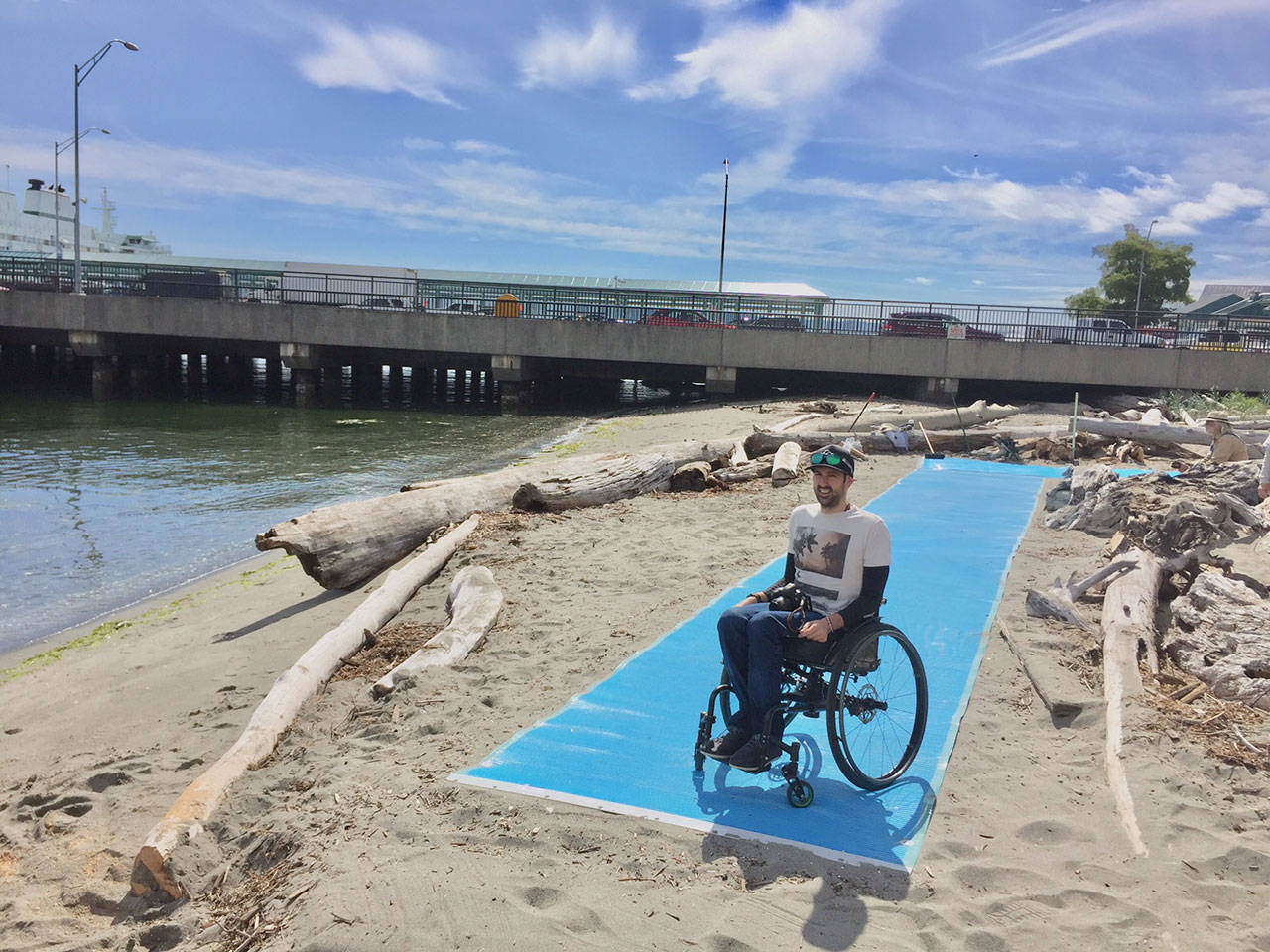Five years ago, Kyle Richardson was living life in California. He had his own successful automobile photography business and surfed in his spare time.
Much changed with an unexpected health complication. The 33-year-old Langley resident is still snapping awesome pictures today, but he does it from a wheelchair.
Thanks to an innovative beach accessibility project, however, his days on the beach are back. This summer he rolled right up to within a few feet of the waterline, “butt-scooted” the rest of the way and soaked his feet in the cool waters of Puget Sound.
“For a guy who used to surf… it was a like a piece of you is coming back,” he said.
Richardson is one of those who are giving an appreciative nod to the Port of South Whidbey and its universal beach accessibility project at Clinton Beach Park. Led by South Whidbey resident Mel Trenor, the pilot aimed to make it easier for those struggling with disabilities to reach the water’s edge by creating a firm path from the parking lot to the shoreline using roll-out mats. Anyone who’s driven by the park this summer will likely have noticed them — they’re bright blue.
That color was picked over a tan or natural shade so people with eye problems could see the mats.
The project, which wrapped up in July, also added two full-size American Disabilities Act parking spaces to the park, and surfaced the lot with permeable pavers.
It took more than two years to complete, and a lot of headaches, but Trenor said the effort’s been well worth it. He’s witnessed firsthand the profound impact it’s had on the disabled.
He watched one man in a powered wheelchair motor back and forth along the mats with an ear-to-ear grin. The man’s parents were standing nearby. They were crying.
“He’s 40 and hasn’t been able to get to the beach since he was 6,’” the couple told Trenor.
It’s even making a difference for pets. Trenor said he watched another Whidbey man haul his old basset hound down the mats to the water in a cart. The dog was able to hang out on the sand while his master waded in the shallows nearby.
“That was a real eye opener,” said Trenor of the project’s widespread impact.
Trenor was the passion and motivation behind the effort, but got hefty support from the port; the district owns the park and coughed up more than $8,000 in funding. It also volunteered its backhoe and an employee to run it. It’s also storing the mats during the winter months, as they’re only used from May to late October.
The park may be the first of its kind in the region, and certainly is in Island County. Trenor said he’s already setting his gaze on other areas on South Whidbey, particularly Freeland Park and Robinson Beach Park at Mutiny Bay. Island County Commissioner Helen Price Johnson said both properties have challenges but that she’s very interested in looking into an accessibility project somewhere in Freeland.
“I think creating better accessibility to the beach in all of Island County is a good thing,” she said.
“There’s some great opportunities there. I’m really excited about it.”
Richardson, who consulted on the Clinton project and helped lay pavers, said he’s told friends in Seattle about park and that a few dozen at least are making plans to visit South Whidbey.



